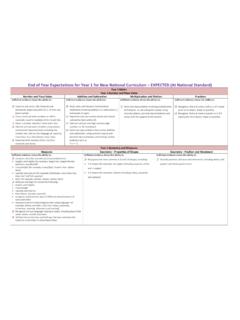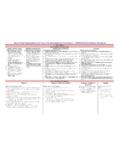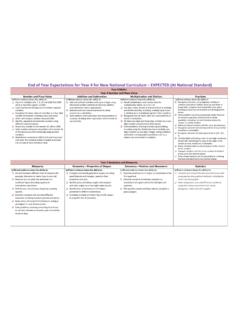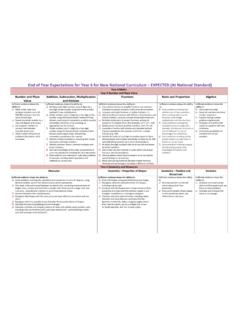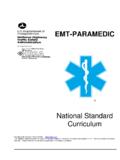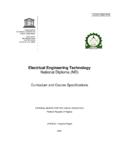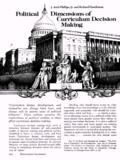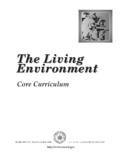Transcription of End of Year Expectations for Year 3 for New …
1 End of Year Expectations for Year 3 for New national curriculum expected ( at national standard ). Year 3 Maths Year 3 Number and Place Value Number and Place Value Addition and Subtraction Multiplication and Division Fractions Sufficient evidence shows the ability to: Sufficient evidence shows the ability to: Sufficient evidence shows the ability to: Sufficient evidence shows the ability to: Count from 0 in multiples of 4, 8, 50 and 100; find 10 Add and subtract numbers mentally, including: a Recall and use multiplication and division facts for Count up and down in tenths.
2 Recognise that tenths or 100 more or less than a given number. three-digit number and ones, a three-digit number the 3, 4 and 8 multiplication tables. arise from dividing an object into 10 equal parts and Recognise the place value of each digit in a three- and tens, a three-digit number and hundreds. Write and calculate mathematical statements for in dividing one-digit numbers or quantities by 10. digit number (hundreds, tens, ones). Add and subtract numbers with up to three digits, multiplication and division using the multiplication Recognise, find and write fractions of a discrete set of Compare and order numbers up to 1000.
3 Using formal written methods of columnar addition tables that they know, including for two-digit objects: unit fractions and non-unit fractions with Identify, represent and estimate numbers using and subtraction. numbers times one-digit numbers, using mental and small denominators. different representations. Estimate the answer to a calculation and use inverse progressing to formal written methods. Recognise and use fractions as numbers: unit Read and write numbers up to 1000 in numerals and operations to check answers.
4 Solve problems, including missing number problems, fractions and non-unit fractions with small in words. Solve problems, including missing number problems, involving multiplication and division, including denominators. Solve number problems and practical problems using number facts, place value, and more complex positive integer scaling problems and Recognise and show, using diagrams, equivalent involving these ideas. addition and subtraction. correspondence problems in which n objects are fractions with small denominator.
5 Connected to m objects. Add and subtract fractions with the same denominator within one whole [for example, 5/7 +. 1/7 = 6/7 ]. Compare and order unit fractions, and fractions with the same denominators. Solve problems that involve all of the above. Year 3 Geometry and Measures Measures Geometry Properties of Shapes Geometry Position and Movement Statistics Sufficient evidence shows the ability to: Sufficient evidence shows the ability to: Sufficient evidence shows the ability to: Sufficient evidence shows the ability to: Measure, compare, add and subtract: lengths Draw 2-D shapes and make 3-D shapes using Use mathematical vocabulary to describe position, Interpret and present data using bar charts, (m/cm/mm); mass (kg/g).
6 Volume/capacity (l/ml). modelling materials; recognise 3-D shapes in direction and movement, including movement in a pictograms and tables solve one-step and two-step Measure the perimeter of simple 2-D shapes. different orientations and describe them. straight line and distinguishing between rotation as a questions [for example, How many more?' and How Add and subtract amounts of money to give turn and in terms of right angles for quarter, half and many fewer?']. change, using both and p in practical contexts.
7 Recognise angles as a property of shape or a three-quarter turns (clockwise and anticlockwise). Tell and write the time from an analogue clock, description of a turn. Use information presented in scaled bar charts and including using Roman numerals from I to XII, and pictograms and tables. 12-hour and 24-hour clocks. Identify right angles, recognise that two right Estimate and read time with increasing accuracy angles make a half-turn, three make three to the nearest minute; record and compare time quarters of a turn and four a complete turn.
8 In terms of seconds, minutes and hours; use identify whether angles are greater than or less vocabulary such as o'clock, , morning, than a right angle. afternoon, noon and midnight. Know the number of seconds in a minute and the Identify horizontal and vertical lines and pairs of number of days in each month, year and leap perpendicular and parallel lines. year. Compare durations of events [for example to calculate the time taken by particular events or tasks]. Year 3 Reading Word Reading Comprehension Sufficient evidence shows the ability Sufficient evidence shows the ability Read with fluency a range of age-appropriate Fully engage with and enjoy reading a range of texts, making choices and explaining preferences; begin to know preferred authors and text types; talk about books enjoyed text types from those specified for YRs 3 and 4 both in and out of school.
9 (which may include fairy stories, myths and Listen to, discuss and express views about a wide range of fiction ( including fairy stories, and perhaps myths and legends over the two YR cycle), poetry (including those legends, poetry, plays and non-fiction books). read aloud and performed) and plays - sometimes at a level beyond that which they can read independently. Read at a speed sufficient for them to focus on Listen to and discuss a range of non-fiction and reference or text books, that are structured in different ways; identify their particular characteristics; recognise typical understanding.
10 Presentational features. Read most common exception words by sight, Identify themes and conventions in a range of books identify a theme of journeys' or invasion'; recognise the conventions of a fairy story or play; recognise how a non- (including all those in the YR 2 spelling appendix) fiction book is often organised and presented. noting unusual correspondence between spelling Recognise some different forms of poetry, such as shape poems, free verse or narrative; explain their differences. and sound.
